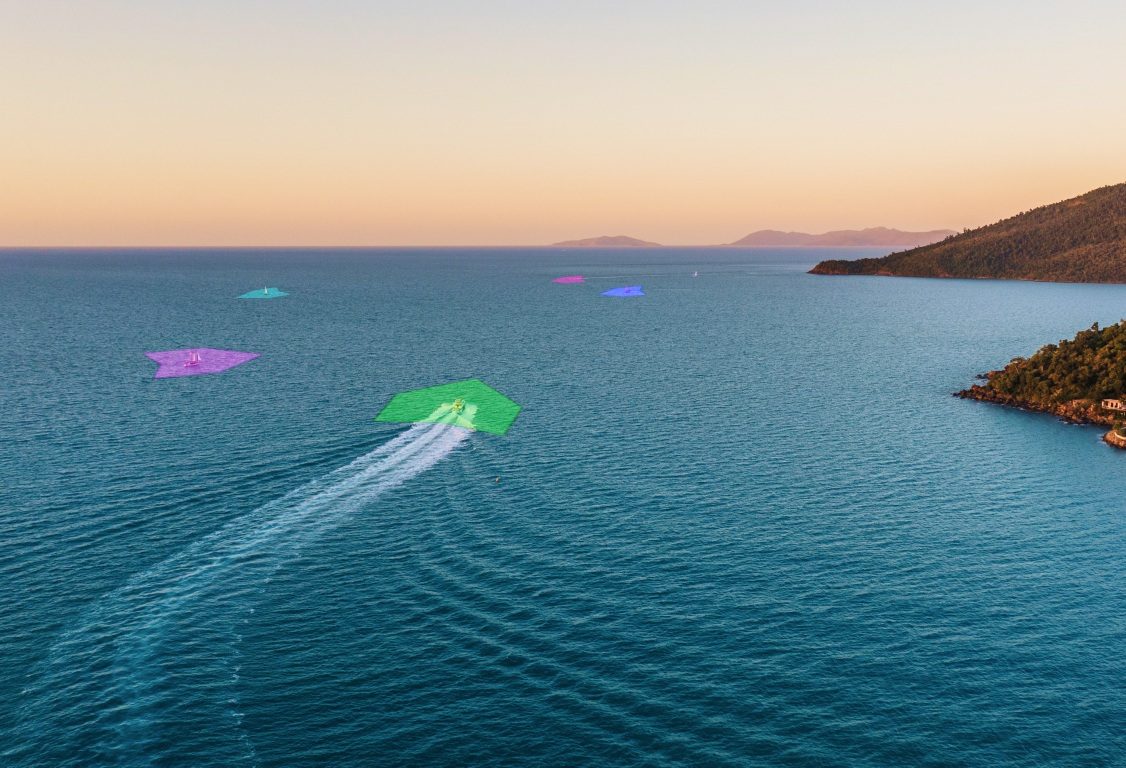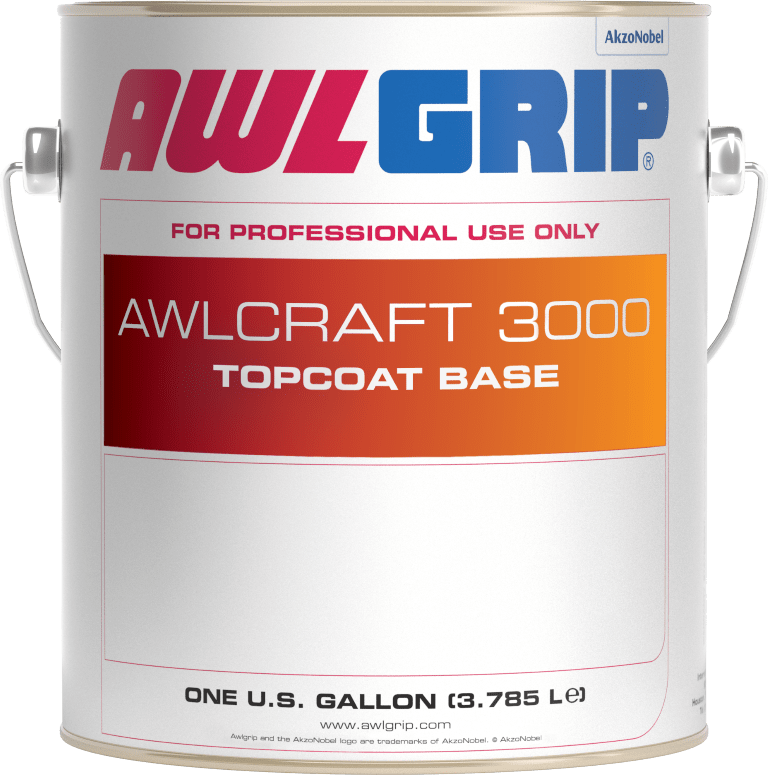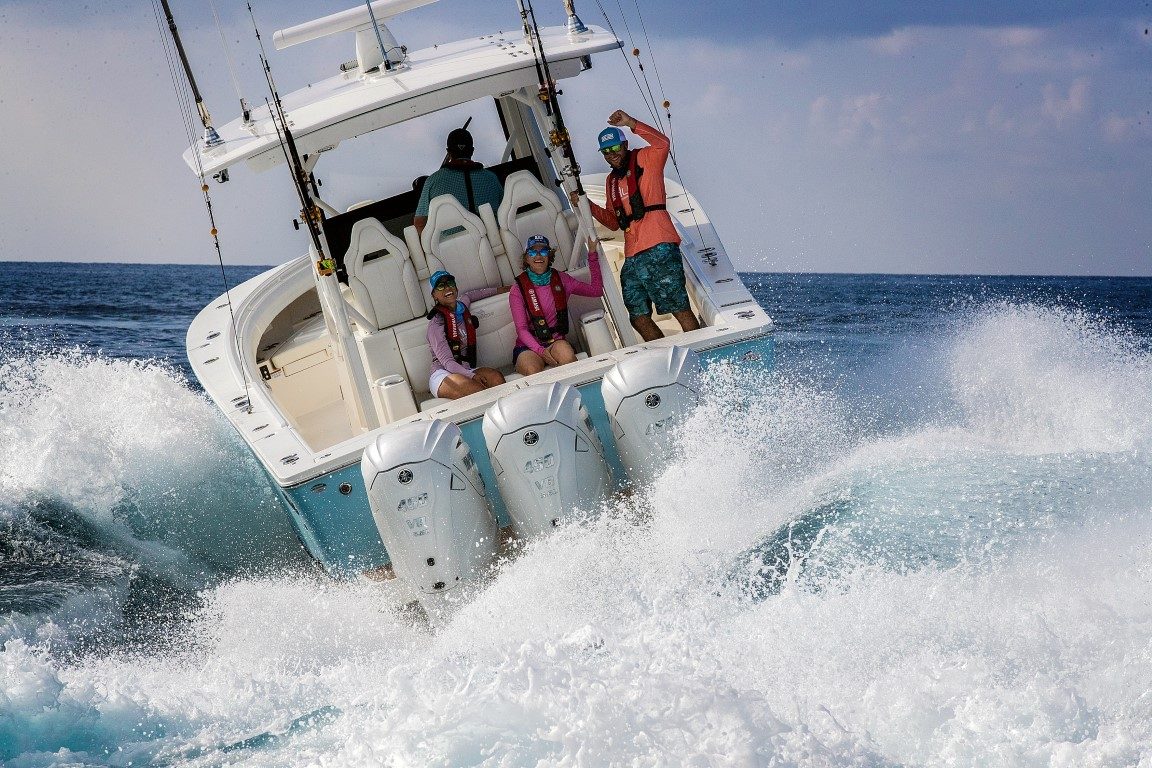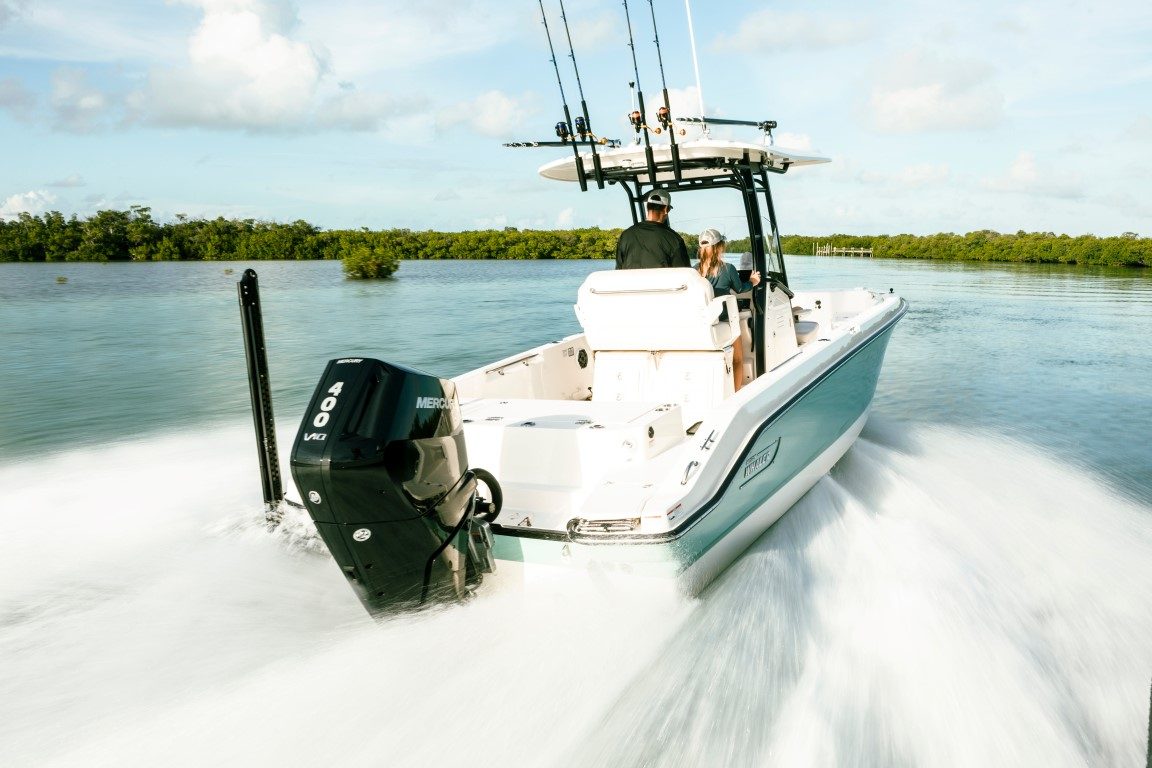

ETNZ is leading hydrogen-powered marine technology, reports John Eichelsheim.
The sight of Emirates Team New Zealand’s (ETNZ) hydrogen-powered chase boat Chase Zero whizzing past us a couple of weeks ago took me quite by surprise. Firstly, I didn’t hear it coming and secondly, while it didn’t appear to be moving particularly fast, it foiled away from us so quickly it was soon out of sight.
A couple of weeks later I had the opportunity to experience this revolutionary all-carbon vessel first-hand, joining other journalists at ETNZ’s Viaduct base for an on-water demonstration.
With (comfortable) seating for six, there was room inside the futuristic looking catamaran for four journos and two ETNZ representatives, including our skipper Chris ‘Curly’ Salthouse and Chase Zero Operations Coordinator Nick Burridge.
The use of hydrogen has been mandated by ETNZ as part of its effort to reduce the event’s overall carbon footprint. ETNZ is leading the way with its hydrogen chase boats, but all the teams at the next America’s Cup in Barcelona are obliged to develop and operate similar craft. Uses will include umpire and VIP boundary boats, television camera boats and each competing team will be trailed or supported by its own hydrogen-powered chase boat.
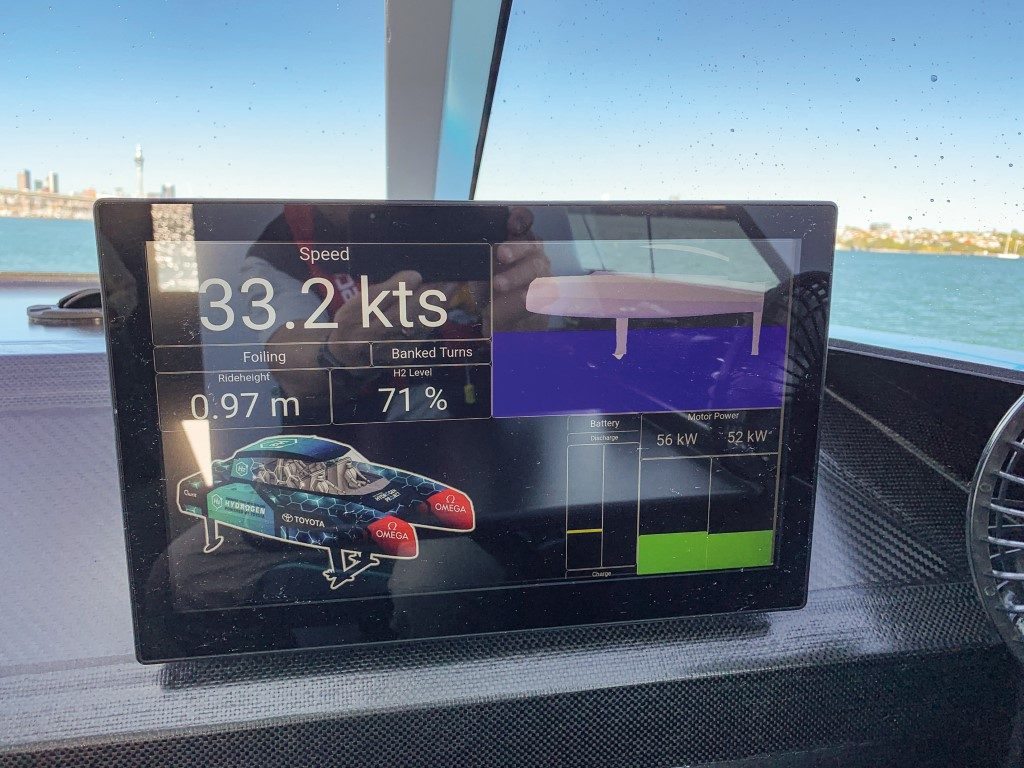
Chase Zero is essentially a hybrid vessel that uses hydrogen fuel cells to charge batteries for the vessel’s electric propulsion system. Toyota, pioneers of fuel cell technology, provided the pre-production hydrogen fuel cells in Chase Zero, while Global Bus designed and installed the hydrogen fuel cell power train alongside Emirates Team New Zealand mechatronic engineers. Gurit worked with ETNZ’s structural design team to design and build Chase Zero.
Chase Zero is a relatively modest 10m long with a beam of 4.5m. Two 220kW electric motors drive streamlined propellers, one on each side of the primary foil, the motor shafts passing through the foil uprights.
The motors themselves are enclosed in housings inside the ‘helm’ consoles and their operation, combined with the mechanical whine of the gearing, accounts for most of the noise inside the cabin.
Four 42kWh batteries provide the electricity for the electric motors while eight 8.4kg hydrogen tanks pressurised at 350bar supply the vessel’s four 80kW fuel cells, which in turn keep the batteries charged.
For AC37, ETNZ aim to fuel its hydrogen boats within 15 minutes using technology developed by its hydrogen infrastructure partner and green hydrogen supplier Hiringa.
With all-carbon construction, Chase Zero displaces just 4,800kg. When she reaches a speed of exactly 19 knots she rises from the water onto her foils – a primary π-foil under the helm position amidships, and a single T-rudder aft.

The transition between non-foiling and foiling, as well as all aspects of foiling ‘flight’, are computer controlled, the autopilot system continually making dynamic adjustments to compensate for changing conditions, speeds and helm inputs.
For our run, we flew about a metre above the water, reaching speeds over 40 knots and making smooth turns at 30-plus knots with minimal banking. Progress was smooth and there was little sensation of speed, but display panels in front of every seat supply speed and other data, including battery charge level, engine power settings, fuel level and much more.
Chase Zero maintains foiling until the speed drops to around 20 knots, when the vessel performs a controlled ‘landing’ back on the water. The autopilot also lands the boat should one of the hulls contact the water due to rough conditions or extreme manouevres.
At the time of our demo, Chase Zero had spent 36 hours running and covered 1,042km (562.6 nautical miles). The top speed achieved was 50.3 knots and the longest non-stop run was 280km (151.2nm) at an average speed of 28.3 knots.

To put that into perspective, the same day’s run in a regular ETNZ 11m chase boat with twin 250hp outboards would have used 140 litres of petrol an hour @ 28knots – 825 litres in total. Chase Zero’s full range is calculated at 330km @28knots or 178.19 nautical miles.
The hydrogen power train has been fully automated and is very reliable – climb aboard, turn the key and leave the dock.


